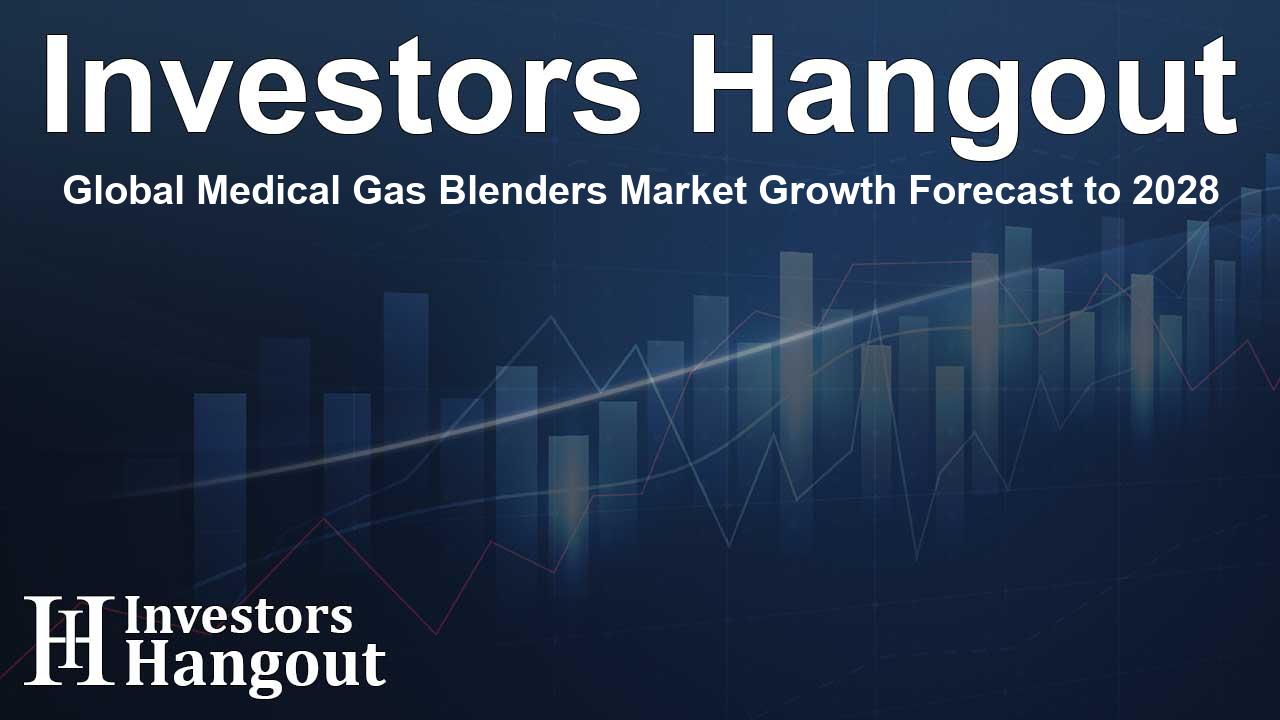Global Medical Gas Blenders Market Growth Forecast to 2028

Exploring the Growth of the Medical Gas Blenders Market
The global medical gas blenders market is predicted to experience substantial growth in the coming years, with an estimated increase of USD 582 million by 2028. This growth trajectory reflects a compound annual growth rate (CAGR) of 5.42%, largely propelled by an aging population and the rising prevalence of chronic diseases. The surge in surgical procedures necessitates precise gas control, particularly in anesthesia delivery, driving the demand for advanced medical gas blending technologies.
Understanding Market Drivers
One of the key factors contributing to the expansion of the medical gas blenders market is the increasing number of surgical procedures performed globally. Conditions such as cancer, which primarily affect the elderly, require the use of anesthesia delivery machines that rely on accurate gas blending. These machines must maintain a precise flow of gases like oxygen and nitrous oxide to provide effective and safe anesthesia. The traditional manual handling of gases is steadily being replaced by automated systems that promote safety and efficacy in medical settings.
Impact of Aging Population
The growing elderly demographic significantly impacts market trends. As older adults typically require more surgical interventions, the reliance on medical gas blenders becomes crucial. Devices such as the gas blending system, ventilating system, and gas exhaust system play an essential role in any anesthetic setup, emphasizing the importance of precision in gas mixing for patient safety.
Technological Innovations
Technological advancements in gas blending systems are also crucial drivers of market growth. Innovations in electronics and automation enhance the accuracy of gas mixtures delivered to patients. Companies are investing in research and development to create more sophisticated control systems that offer enhanced safety features. For example, electronic gas mixing technologies ensure reliable performance and minimize the risk of errors often associated with manual adjustments.
Challenges in the Medical Gas Blenders Market
Despite the optimistic growth outlook, the medical gas blenders market does face challenges. Stringent regulations govern the design and manufacturing of medical devices, including gas blenders, imposing a barrier for some companies entering the market. Compliance with regulations such as the Medical Device Directive in Europe is mandatory to guarantee safety and effectiveness. Industries must navigate complex regulatory environments while innovating within their product lines.
Cost and Complexity of Compliance
Additionally, the costs associated with ensuring compliance with these regulations can be significant. Medical gas blenders must meet safety standards and undergo rigorous testing protocols before they can be marketed. Therefore, companies need to balance innovative design with the financial implications of meeting such requirements.
Market Segmentation Insights
The scope of the medical gas blenders market is broad, encompassing various segments and applications. Hospitals, ambulatory surgical centers, pharmaceuticals, and home care settings represent some of the primary end-users of gas blending technology. Each of these settings has distinct requirements that influence the types of gas blending systems utilized.
End-User Analysis
The hospital sector remains the largest contributor to the medical gas blenders market. Given the necessity for precise oxygen delivery for patients with conditions such as hypoxia, hospitals are at the forefront of adopting advanced medical gas blending technologies. This trend is expected to continue throughout the forecast period as patient safety and care standards evolve.
Investing in Future Growth
As the medical gas blenders market evolves, companies must prioritize investment in research and development to keep pace with technological trends and patient needs. The integration of artificial intelligence in the medical sector is anticipated to further revolutionize how gas blending systems operate, potentially showcasing enhanced efficiency and precision.
Frequently Asked Questions
What is the projected growth of the medical gas blenders market?
The medical gas blenders market is expected to grow by USD 582 million from 2024 to 2028, with a CAGR of 5.42%.
Who are the leading companies in this market?
Key players include BioMed Devices, ESAB Corp., and Precision Medical Inc., among others.
What are the primary drivers for market growth?
The growth is driven by an aging population, increasing surgical procedures, and advancements in gas blending technologies.
What challenges does the market face?
The market faces challenges such as stringent regulations and the high costs associated with compliance.
How do medical gas blenders contribute to patient care?
These devices ensure accurate mixing of gases necessary for safe anesthesia delivery during surgical procedures, directly impacting patient safety and care quality.
About Investors Hangout
Investors Hangout is a leading online stock forum for financial discussion and learning, offering a wide range of free tools and resources. It draws in traders of all levels, who exchange market knowledge, investigate trading tactics, and keep an eye on industry developments in real time. Featuring financial articles, stock message boards, quotes, charts, company profiles, and live news updates. Through cooperative learning and a wealth of informational resources, it helps users from novices creating their first portfolios to experts honing their techniques. Join Investors Hangout today: https://investorshangout.com/
Disclaimer: The content of this article is solely for general informational purposes only; it does not represent legal, financial, or investment advice. Investors Hangout does not offer financial advice; the author is not a licensed financial advisor. Consult a qualified advisor before making any financial or investment decisions based on this article. The author's interpretation of publicly available data shapes the opinions presented here; as a result, they should not be taken as advice to purchase, sell, or hold any securities mentioned or any other investments. The author does not guarantee the accuracy, completeness, or timeliness of any material, providing it "as is." Information and market conditions may change; past performance is not indicative of future outcomes. If any of the material offered here is inaccurate, please contact us for corrections.